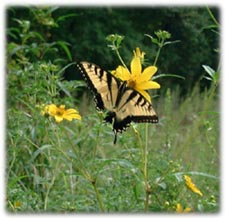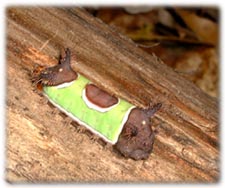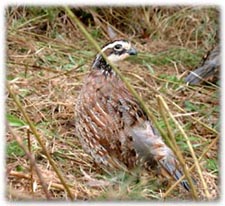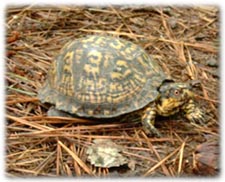Research Programs: Safe Communities
Ecosystem Effects
NHEERL Research Programs

Problem: There are over 20,000 pesticide products containing 620 active ingredients on the market. Each year, 1 billion pounds of active ingredients in conventional pesticides are applied in the United States. There are over 80,000 existing chemicals on the TSCA inventory and each year an additional 2,000 chemicals are added. Release of these chemicals into the environment through agricultural and nonagricultural application and other means poses serious risks to both human health and ecosystems (e.g., plant and wildlife). In order to accurately characterize risk from and appropriately regulate the manufacture and use of pesticides and other chemicals, EPA must conduct a cost benefit analysis for each product. Data needed for such analyses are provided, for the most part, by the manufacturer. It is, however, the responsibility of the Agency to provide detailed data collection protocols. This is accomplished through the publication of test guidelines. The guidelines, including those used to identify and characterize ecosystem effects, must be developed and periodically reviewed.
Scientific Questions:

- Have recent scientific advances revealed the need to evaluate additional ecological endpoints?
- Have recent scientific advances resulted in the need to develop new of refine existing test guidelines?
- What are the effects, in terrestrial and aquatic ecosystems of multiple exposures to toxic chemicals, including pesticides, either individually or as mixtures?
- How do these effects differ when exposure occurs in the presence of another, non-chemical, stressor?
- What structural features are responsible for the ecological effects of specific classes of compounds?
- Are specific effects sufficiently associated with specific structure and/or activity that this information can serve as the basis for regulatory prioritization?

Approach: In order to comply with the mandates of TSCA and FIFRA, NHEERL research is evaluating existing test guidelines and developing new and improved test methods for incorporation into the OPPTS test guidelines series. The development of methods to evaluate the ecological effects of cumulative of exposure to pesticides and other anthropogenic stressors is a focus of this research area. Research is also being conducted to develop and validate predictive models, including BBDR and SAR models, to identify and characterize ecological hazard and risk. This research will improve directly the quality of the data received from manufacturers and registrants and indirectly the quality of risk management decisions for pesticides and industrial chemicals.

- We have developed a modeling approach that uses computer-based Structure-Activity Relationships (SAR) for the systematic screening of reactive (electrophilic/proelectrophilic) mechanisms of toxicity among industrial chemicals and pesticides.
- We completed a series of papers that describe biochemical and cellular techniques for assessing bioactivation and toxic responses of model quinone compounds. These are techniques needed to classify those compounds capable of producing toxicity through one-electron reactions.
![[logo] US EPA](https://webarchive.library.unt.edu/eot2008/20081106182742im_/http://www.epa.gov/epafiles/images/logo_epaseal.gif)
